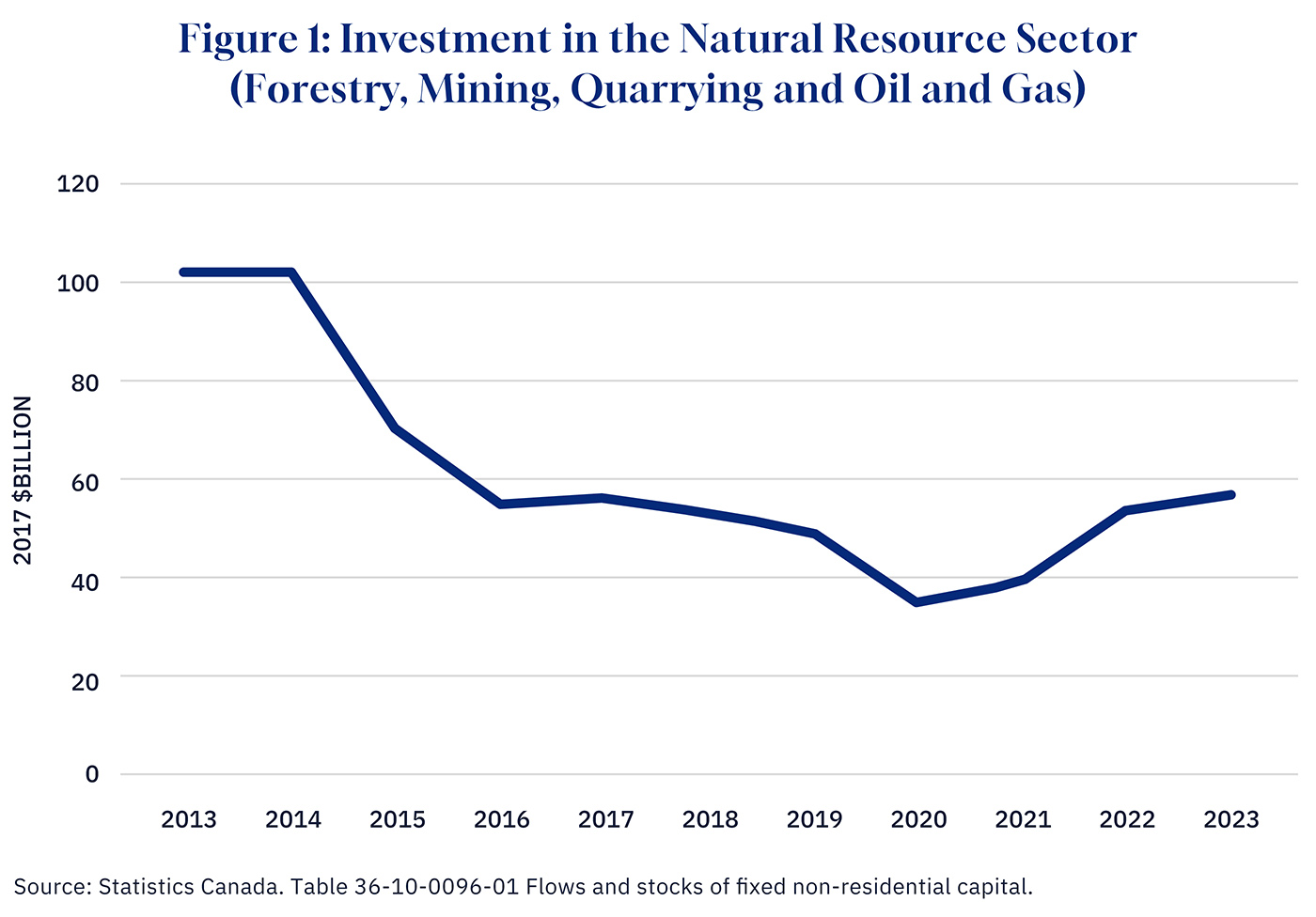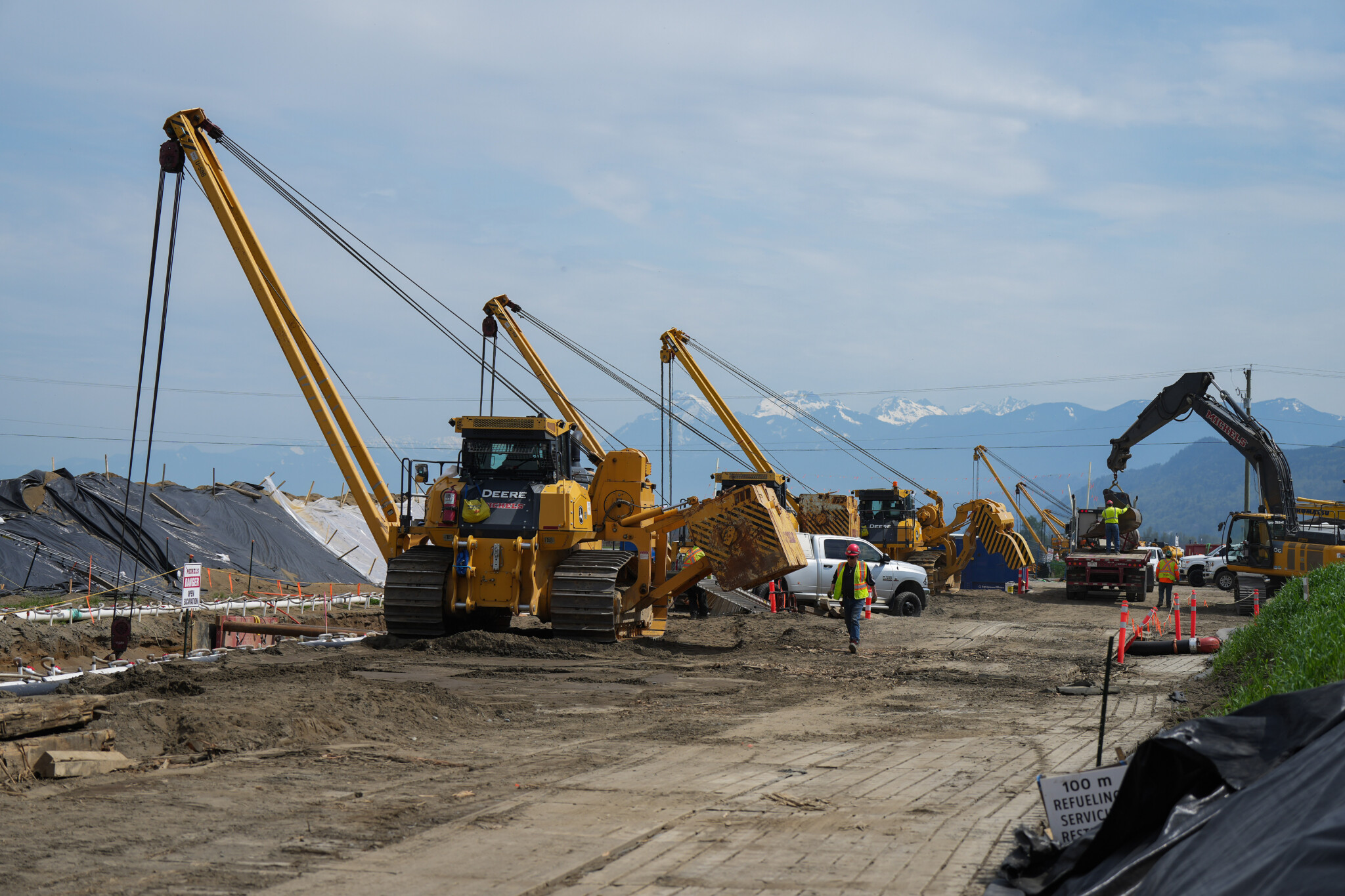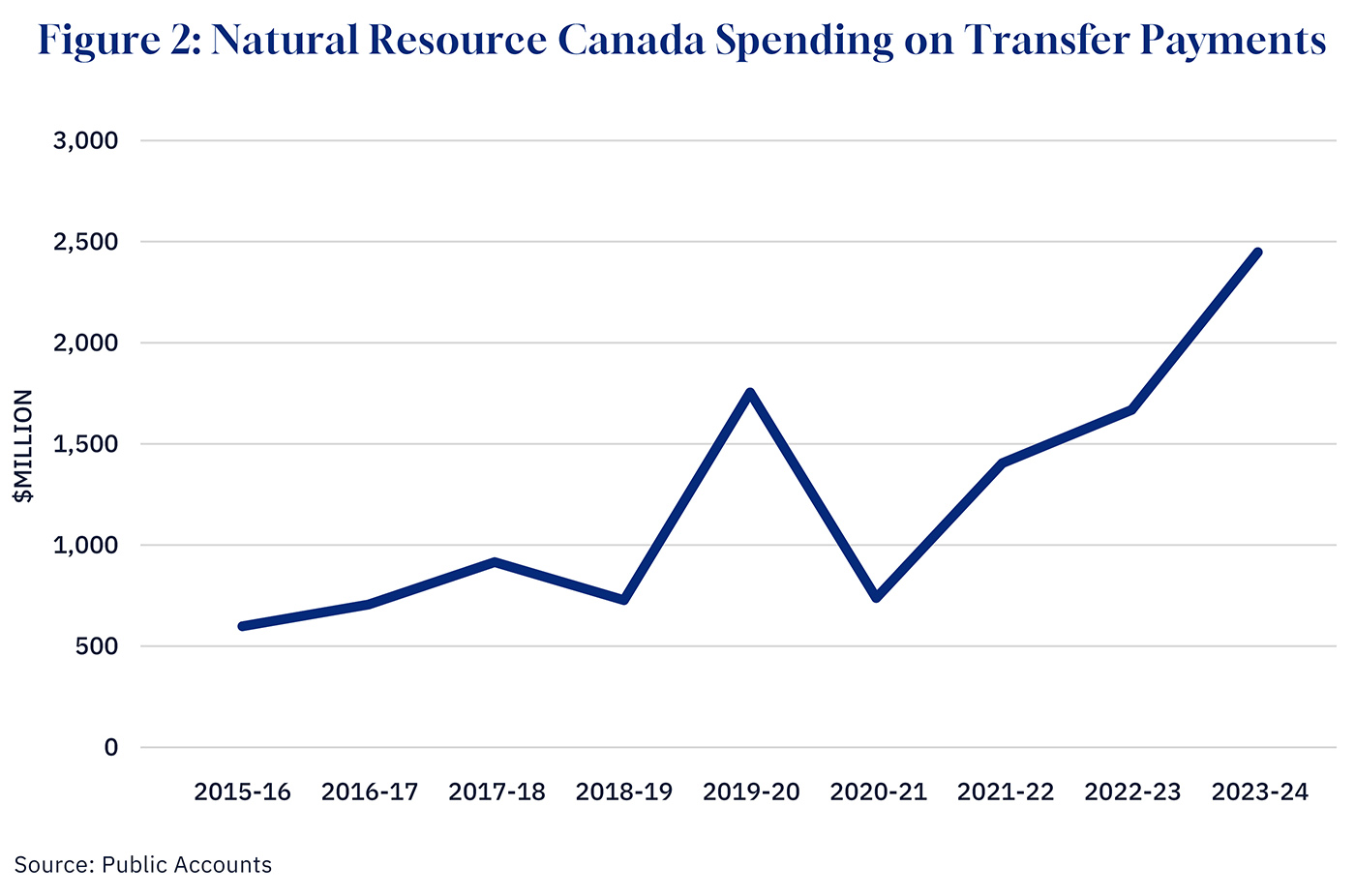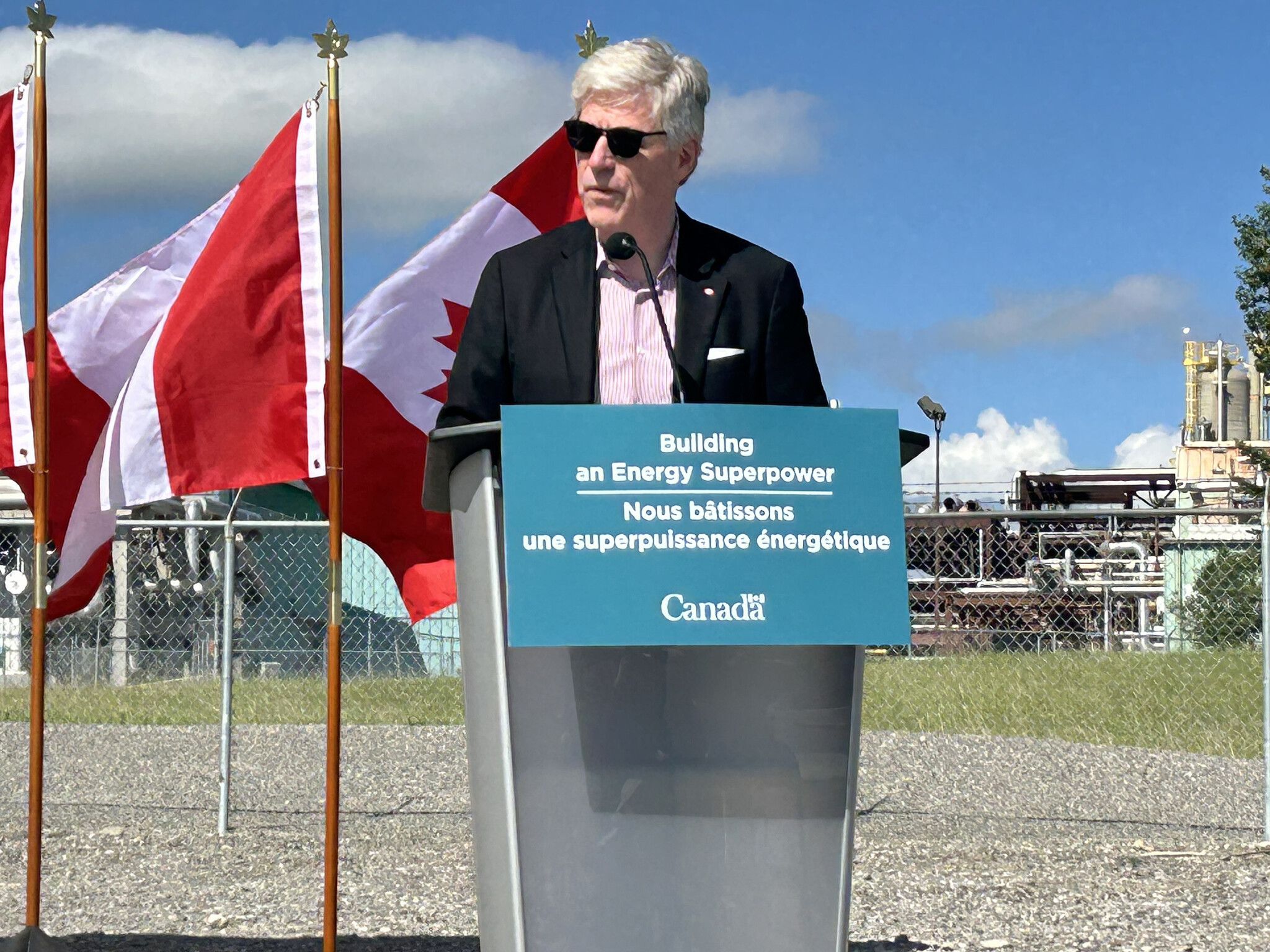In a departure from past practice, Prime Minister Carney has decided not to issue individual mandate letters to his ministers, leaving each to determine on their own how best to contribute to the government’s agenda and fulfill their responsibilities. In Letter to a minister, The Hub’s new series in collaboration with the Macdonald-Laurier Institute, we will provide each minister with a policy agenda that is bold enough to address the grave challenges that the country faces, but manageable enough to be implemented in a realistic time frame.
The series continues with a letter to the minister of energy and natural resources
October 11, 2025
The Honourable Tim Hodgson P.C. M.P.
Minister of Energy and Natural Resources
House of Commons,
Ottawa, Ontario
Dear minister,
Congratulations on your appointment as the minister of energy and natural resources. You are now head coach for three crucial sectors of the Canadian economy: energy, mining, and forestry.
As you know, the prime minister has committed to a generational change, which will require bold ambition from his cabinet. His mandate letter outlined seven key priorities, and your portfolio has an important role to play in achieving these, not only the department of Natural Resources Canada (NRCan), but also its regulators, the Canadian Nuclear Safety Commission (CNSC), and the Canada Energy Regulator (CER). You have an especially significant role to play in “expediting nation-building projects,” “bringing down costs for Canadians,” and “spending less on government operations.”
In sports, there is a saying: “You cannot coach size.” We are fortunate that when it comes to natural resources, Canada has size—lots of size. We have almost everything the world needs—from conventional and unconventional energy to critical minerals to forest products. We are also known as socially and environmentally responsible—our oil and gas sector, for example, has made great strides in reducing carbon intensity—and we also offer a secure source of supply for countries worried about an increasingly turbulent international environment.
Where Canada needs coaching is in living up to this potential. As Chart 1 below shows, investment in our natural resource sector is little changed from 2016, and well below its 2015 peak. The sector is mired in red tape; a new mine in Canada can now take up to 15 years to become operational. Few investors are willing to wait that long to see a return on their capital. Projects such as Northern Gateway and Energy East consumed huge amounts of shareholder capital before being stymied by opposition from various levels of government.

Graphic credit: Janice Nelson
In this letter, I offer some concrete advice on how you can coach Canada’s natural resource sector to reach its full potential, based on my years of experience as a deputy minister in the federal government.
What your role should be
Being the minister of energy and natural resources sounds like an important job, and it is. But it can also be a frustrating one because most of the decisions that affect your sector are made by others.
- Provinces: Natural resources are exclusively a provincial responsibility under s. 92A of the Constitution Act, and most mining, oil and gas extraction, and logging takes place on provincial Crown lands.
- Other federal ministers: Your colleagues, the ministers responsible for Environment and Climate Change Canada (ECCC), Fisheries and Oceans Canada, and Transport Canada, are responsible for the key pieces of federal legislation that regulate resource development. Even the new Major Projects Office (MPO) is part of the Privy Council Office and reports to the minister of Intergovernmental Affairs rather than to you.
- Business: It is important to remember that investment and production decisions are generally made by businesses, which are often transnational and need not invest their dollars in Canada. Indeed, after many years of shifting policy, businesses are quite reluctant to invest in Canada.
This means that your most important role will be to use the “bully pulpit” of your office to advocate with all these players for Canada’s energy, mining, and forestry sectors.
Perhaps the most important of these advocacy roles will be with your cabinet colleagues, who hold so many of the regulatory tools that affect the sector. As detailed in a recent open letter to the prime minister by Canada’s major energy companies, a complex thicket of legislation and regulations—including the Impact Assessment Act (IAA), the West Coast tanker ban, and the oil and gas production cap—stands in the way of resource development in Canada. You will have the opportunity to make the case for the reform or elimination of many of these impediments behind the closed doors of the cabinet room.
Another area where your “soft power” can come into play is the federal government’s relationship with Indigenous Peoples. Unfortunately, the Building Canada Act has drawn considerable criticism from Indigenous groups for putting project approvals before Indigenous engagement. While the government has tried to rectify this situation by establishing an Indigenous advisory council in support of the new Major Projects Office, as my Macdonald-Laurier Institute colleague Karen Restoule has recently argued, this cannot be a substitute for partnerships between individual Indigenous nations and resource companies. Your role can be to advocate for a policy environment—including programs such as Indigenous loan guarantees—that will facilitate these partnerships.
Specific policy actions that you can take as minister
None of this is to say that you have no policy tools at your disposal: Both the Canadian Energy Regulator (CER), which regulates interprovincial and international energy activities—including pipelines and power lines—and the Canadian Nuclear Safety Commission, which regulates the nuclear industry, both report to you, and your department is responsible for setting energy efficiency standards for everything from clothes dryers to lawn mowers. Your department also spends a great deal of money—$2.5 billion in 2023-24—much of which goes to programs designed to subsidise the development and adoption of clean technology (although the results have been mixed to say the least, as we shall see).
With that in mind, here are four concrete things that you can do that would make a measurable difference both for Canada’s resource sector and for Canadian consumers and taxpayers.
1. Empower an independent Canada Energy Regulator
In its previous guise as the National Energy Board (NEB), the Canada Energy Regulator (CER) had a reputation as a competent regulator with a track record of meeting timelines. However, the Harper government removed its decision-making ability over major pipeline projects (i.e., those over 40 kilometres in length), in part because the government wanted to ensure approval of Northern Gateway—a project which the regulator would likely have approved anyway. The Trudeau government further reduced the CER’s importance by designating pipeline projects of more than 75 kilometres of new right of way under the IAA, and so these pipelines must now go through an integrated review process led by the Impact Assessment Agency of Canada, a part of the Environment and Climate Change Canada portfolio, before cabinet consideration.
Both these decisions have added regulatory delay and political risk—both things that private sector investors flee from. The problem with the Building Canada Act, as we argued in our earlier letter to the minister of ECCC, is that while it will reduce regulatory delay for select projects, it increases political involvement, which heightens regulatory uncertainty.
A better approach over the long term would be to restore the CER to its traditional role as the final decision-maker, with clear marching orders on timelines and on factors to consider in decisions. At minimum, returning designated pipeline reviews back to the CER from the Impact Assessment Agency (IAA) would require a regulatory amendment to the IAA’s Designated Projects List. Restoring the CER as final decision-maker on all pipeline projects would require changes to the Canadian Energy Regulator Act. This will lead to a stable regulatory regime that private sector investors can once again trust to make predictable decisions that are not based on politics.

Heavy equipment is seen as workers lay pipe during construction of the Trans Mountain pipeline expansion on farmland, in Abbotsford, B.C., on Wednesday, May 3, 2023. Darryl Dyck/The Canadian Press.
2. Make critical minerals a strategic national security asset
Critical minerals such as copper, lithium, and rare earths are increasingly essential to a modern economy, crucial to the production of everything from smartphones to batteries to jet engines. Perhaps even more importantly, these minerals are essential to producing modern weapon systems, making control over critical mineral supply a key goal for national security policy.
While Canada does have a $3.8 billion critical minerals strategy, released in 2022 by your predecessor, it focuses very much on critical minerals in the context of the “clean economy.” However, the overriding policy imperative in this historical moment is to ensure that the defence supply chain of Canada and its allies is insulated as much as possible from potential adversaries, particularly China, which dominates the production of most of these minerals as part of a deliberate strategy to enable economic coercion.
It will therefore be essential to have a critical minerals strategy that identifies vulnerabilities in the defence supply chain and that proposes actions to deal with them. A key element of this strategy should be countering China’s strategy of manipulating prices—particularly of rare earths—to make investment in alternative sources of supply unprofitable. This will require the government to offer guaranteed minimum prices for suppliers so that China does not deliberately undercut them.
This would be an obvious area to work with allies such as the U.S., EU, and Japan, which are wrestling with the same issues, and who should be willing to share in the financial burden in return for the “on-shoring” of a secure source of supply. In addition, given that Canada and our allies’ critical minerals needs will be constantly changing, NRCan’s Critical Minerals Centre of Excellence should initiate expedited reviews of any new additions to our allies’ critical minerals lists.
3. Harmonize energy efficiency standards with the United States through mutual recognition
Having to comply with different regulatory regimes for product performance imposes significant costs on business, which are passed on to consumers, as well as creating significant bureaucracy in Ottawa. While having our own energy standards is often justified as allowing for greater energy efficiency in Canada, the reality is that standards do not differ much between the two countries—indeed, if anything, U.S. standards are usually more stringent.
Harmonizing regulations with the U.S. would mean that manufacturers would not need to produce different models for the Canadian market, reducing prices and expanding consumer choice. The easiest way to do this harmonization is by mutual recognition: Any product that meets U.S. federal standards should be automatically approved for sale in Canada.
4. Reduce spending and focus on priority areas
NRCan is one of the departments that has seen the fast growth in spending since 2015 (which is saying something), with its budget growing 159 percent between 2015-16 and 2023-24. This growth was mostly driven by an explosion in transfer payments. As Chart 2 illustrates, spending on transfers rose from just over $600 million in 2015-16 to just under $2.5 billion in 2023-24, a fourfold increase.

Graphic credit: Janice Nelson
Much of this spending has been driven by a desire to decarbonize the Canadian economy through initiatives like Smart Renewables and Electrification Pathways Program (SREPP) and the Zero Emission Vehicle Infrastructure Program (ZEVIP). However, as we argued in our letter to the minister of ECCC, Canada has had little success in reducing carbon emissions since 2015; furthermore, spending programs are a very inefficient way of achieving reductions, with a cost per tonne well above that of policies such as an industrial carbon tax.
It should therefore be easy to go well beyond the 15 percent reduction target that the prime minister has set and cut transfer payments by at least $1 billion (about 40 percent). This would still leave substantial resources to focus on core objectives, such as the critical minerals strategy described above, as well as to provide temporary support to sectors such as forestry that are impacted by the punitive tariffs imposed by the U.S. administration.
Final thoughts
Coaches are not players: it is not they who get the puck in the back of the net. Rather, the coach’s role is to ensure that every player on the team can realize their maximum potential. So it is with being the minister of energy and natural resources. Your role is not to choose projects or to dispense largesse: rather, it is to identify the obstacles—both inside government and outside—that are preventing Canada from realizing its enormous resource potential, and work with other ministers, provinces, business, and Indigenous Peoples to achieve success. Indeed, Canada’s long-term prosperity depends on it.
Yours sincerely,
Tim Sargent











Comments (2)
Great article, but said Minister is just a puppet of Liberal policy, which will remain unchanged.